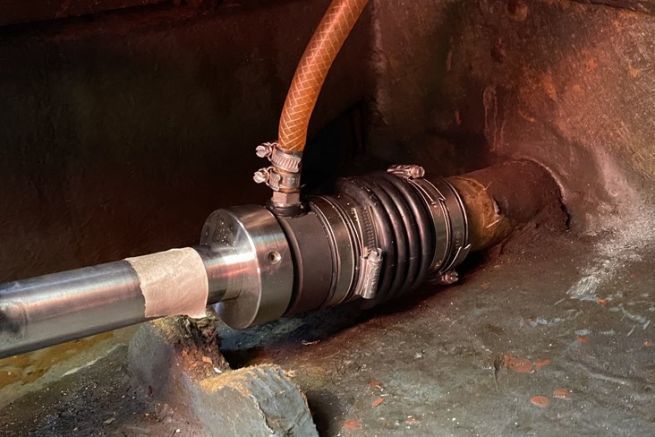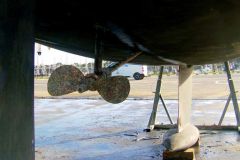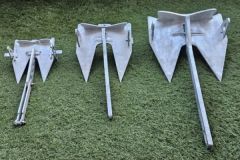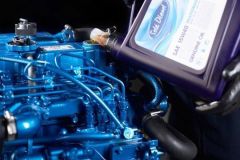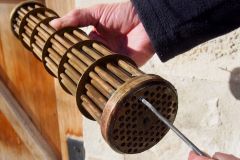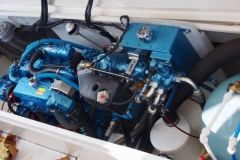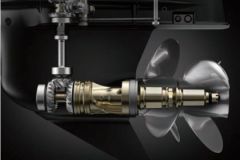If replacing my cable glands was an operation that I had to do, I might as well say it right away, I wasn't really sure I could do it myself. I was a bit afraid of the process of this operation which, if it doesn't succeed, immobilizes the boat, forcing a total success

While taking information to prepare the mechanical intervention, we discover that there are as many models of trunnion as engines: key, simple or double pins, jaws, etc. In short, it is difficult to make an idea without disassembling. A not reassuring introduction for the mechanic apprentice that I am.
In play, the sealing of the shaft line
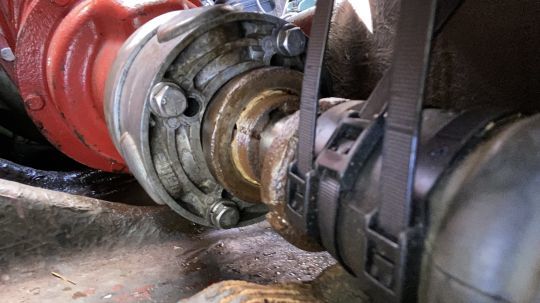
The gland seals the shaft line passage through the hull. The shaft line, a kind of large metal rod, connects the rear of the engine to the propeller. Since the propeller is underwater and the motor is out of the water in the hold, it is necessary to ensure a seal when it passes through the hull. A seal on a rotating shaft, as the rotation of the propeller must not be blocked.
Different models for the same purpose
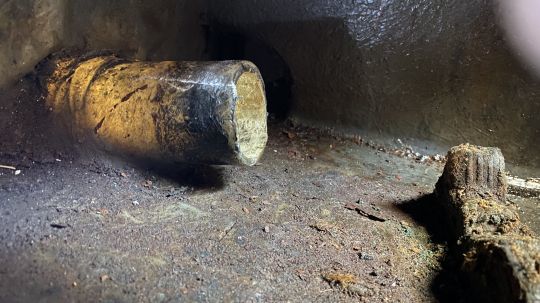
Historically, the cable gland is a part that keeps the gland, a kind of fiber, pressed to ensure the tightness. An efficient system, but one that requires monitoring since it is necessary to regularly tighten the pressure and periodically change the gland. More modern, lip seals, such as Volvo, can also ensure the seal. It is this model that I will replace on my boat. As a replacement, we have chosen a third system, the PSS seal. It offers a seal between a stainless steel ring and a carbon ring, using water as lubricant.
Uncouple the propeller shaft
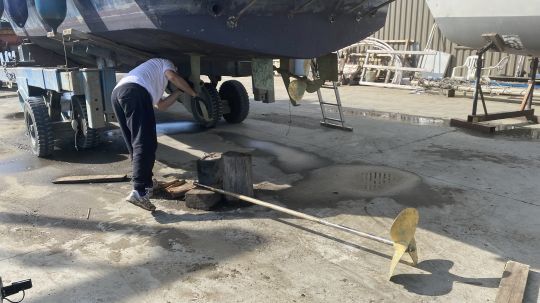
To install a gland, regardless of the model, the shaft line must be disconnected from the motor. This means removing the journal, which is the part that connects the two. Once this is disconnected, the shaft can be moved backwards. The old stuffing box can come out and the new one can be installed. It will be tightened on the stern to ensure the seal with the front hull. The stainless steel ring is then put under pressure on the axis, for the rotating seal. It is therefore necessary to give indications of the diameter of the stern and the shaft to order the new gland. In our case, a stern of 75 mm and a shaft of 35 mm.
A simple workflow
Thus explained, the intervention does not seem complicated. It just requires to put the boat in the dry. The main difficulty we encountered was accessibility problems. Indeed, on our boat, this part is located at the back of the engine, well hidden under the diesel tank. We had to work hard to get to this difficult to reach place.
Minimum two people
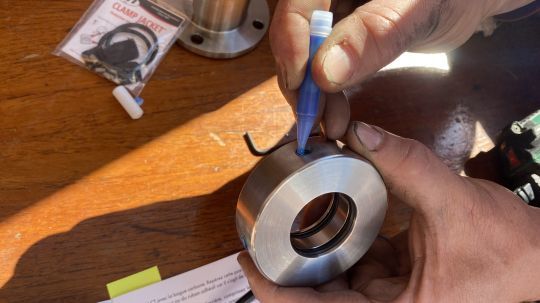
Fortunately, there were two of us for this intervention. This is essential, because when one was unscrewing at the bottom of the hold, the second could block the shaft by putting wedges under the propeller and sliding under the hull.
After a lot of trial and error to understand the operation of the existing trunnion, a Vetus coupling model that is supposed to absorb the jerks, we succeeded in doing the operation in 2 days for the 2 engines. Obviously, the second one went faster, as the first one had been through the wringer.
Total success!
Before the operation, there was always water in the hold and the bilge pump was always switched on as soon as the boat was underway. Now, the new models ensure a perfect seal. In addition, the friction between the stainless steel and the carbon does not risk wearing out the shaft, as the lip seal did.
